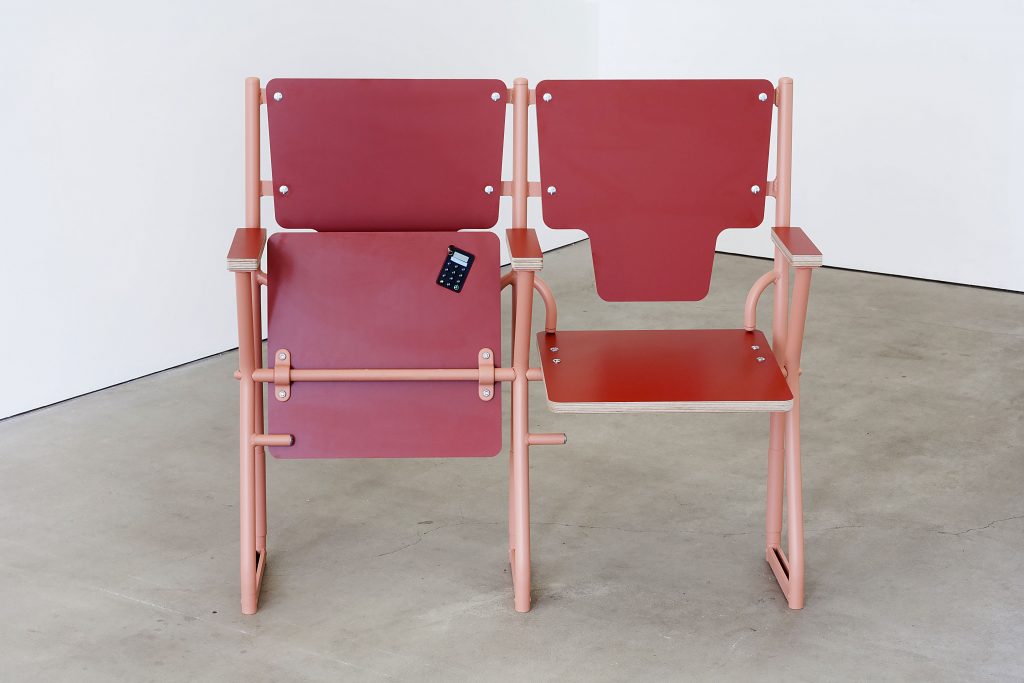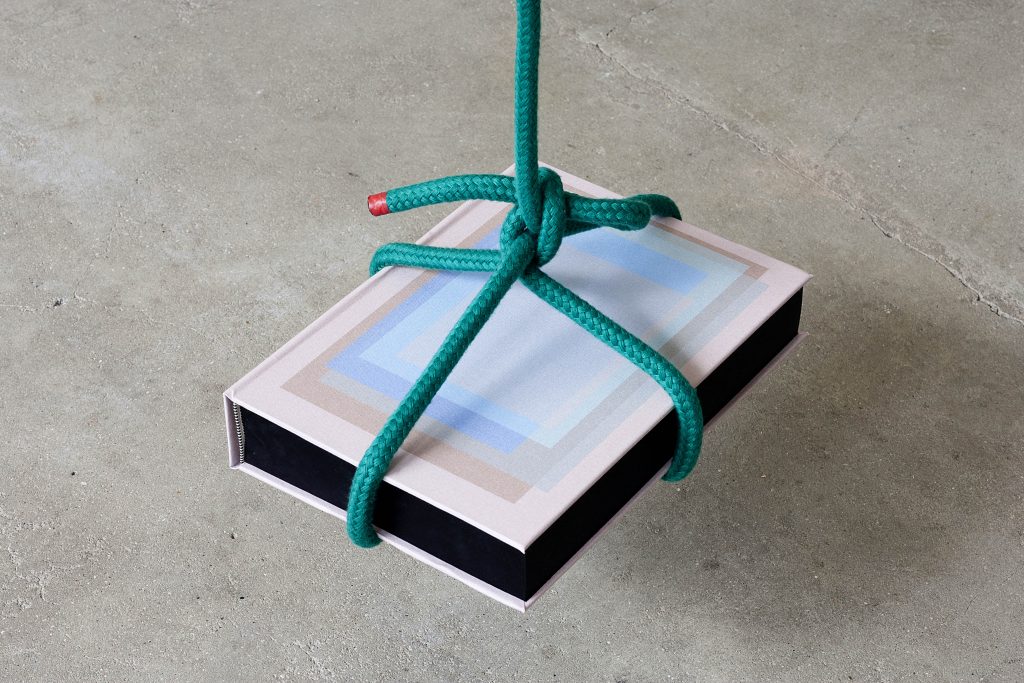
Madalina Zaharia (b.1985, Sighetu Marmatiei, Romania) is a Romanian artist who lives and works in London. She graduated from the Royal College of Art (London) with an MA in Printmaking in 2012, having gained a Postgraduate diploma in Fine Art at Byam Shaw School of Art (CSM) in 2010. Zaharia’s practice combines design and personal narratives in order to disrupt and scrutinise reality, employing digital printing, 3D objects, performance, film and sound as a way of questioning and enhancing ordinary experience. The very fine line between art, design and storytelling is constantly challenged and confronted by the language and visual vocabulary employed within her creative actions, transforming the studio and the gallery into spaces for discourse and abstract entertainment, arenas animated by gestures, objects and meaningful shapes. Recent projects include: Reading as Rhythm: A Sonic Exploration of the Visual Vocabulary of Control Magazine, Tate Exchange Liverpool (2018); DEBT., Tintype Gallery (solo), London (2017); Tender Buttons, SALÓN, Madrid (2017); Say What?, ASC Gallery, London (2016); Identify Your Limitations, Acknowledge The Periphery, Vitrine Gallery, London (2016); The Staging of an Exhibition, Ivan Gallery (solo), Bucharest (2016); London Open 2015, Whitechapel Gallery, London and Feel the discourse!, Guest Projects, London (2015)
http://www.madalina-zaharia.com/
www.tintypegallery.com
Instagram
+++
Q&A with Madalina Zaharia – June 2020
How did you get started?
It was a magazine about the DADA movement that started it all for me. I remember reading about it for the first time and thinking: ‘If this is what art can be, than I definitely want to get involved’. A very defining moment that came about in order ‘to bring me news about myself’, like André Breton would have put it.
What type of work do you make?
My practice falls mostly into the ‘discursive’ type, employing whatever media and materials are necessary in order to exteriorise my interests and ideas. It often operates within the crossing between personal experience, design, storytelling and most recently cinema.
Describe a typical day in the studio?
My studio is also my living room, which means that more often than not, it involves a great deal of sofa time and tv watching (my two favourite ways of procrastinating). Making for me is a slow and steady process that needs to accommodate a great deal of domestic tasks.
What are you currently working on?
I had just finished a very short film about the mess in my flat, an ‘isolation noir’ shown as part of an online exhibition which will be presented on Moderna Galerija’s website (Ljubljana). Working on this film has made me realise that my domestic ambitions are much closer to Silvia Frederici than they will ever be to Marie Kondo. You can see the film by clicking
hereWhat are some of the key influences for your work?
At the moment they seem to come either from the film department, Jessica Forever directed by Caroline Poggi and Jonathan Vinel comes to mind, or from the speculative design area with the obvious references to Anthony Dunne and Fiona Raby. It is hard to name just a few as they are often changing and adapting depending on where I’m at with my practice.
What kind of cultural engagement are you turning to while we are temporarily unable to get to museums, galleries, theatres and events?
I just got myself a 2 weeks subscription to LUX and have been
researching through their online database of artists’ moving image. It’s
truly an amazing resource.
What is the most surprising thing to you about the Chelsea Arts Club?
It’s location – London as a city, has become so hostile (in terms of affordability) to artists today and it’s always amazing to see these kind of initiatives surviving in the most unexpected places.
The thought that gets me out of bed each day is … I need breakfast.
Images:
Comfy Seating and Internet Banking, 2017
Tintype Gallery, London
Book-Keeping (detail), 2017
Tintype Gallery, London


